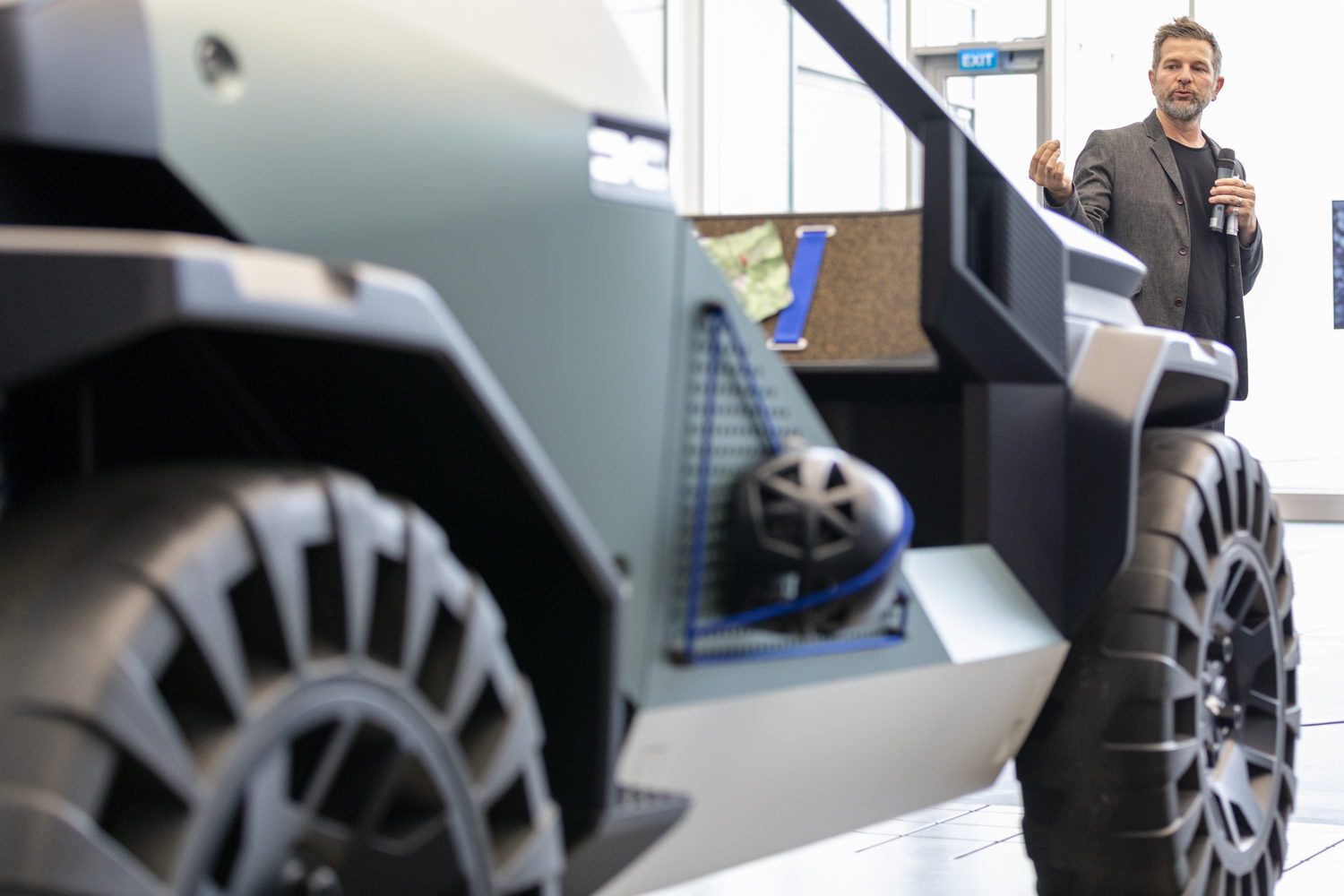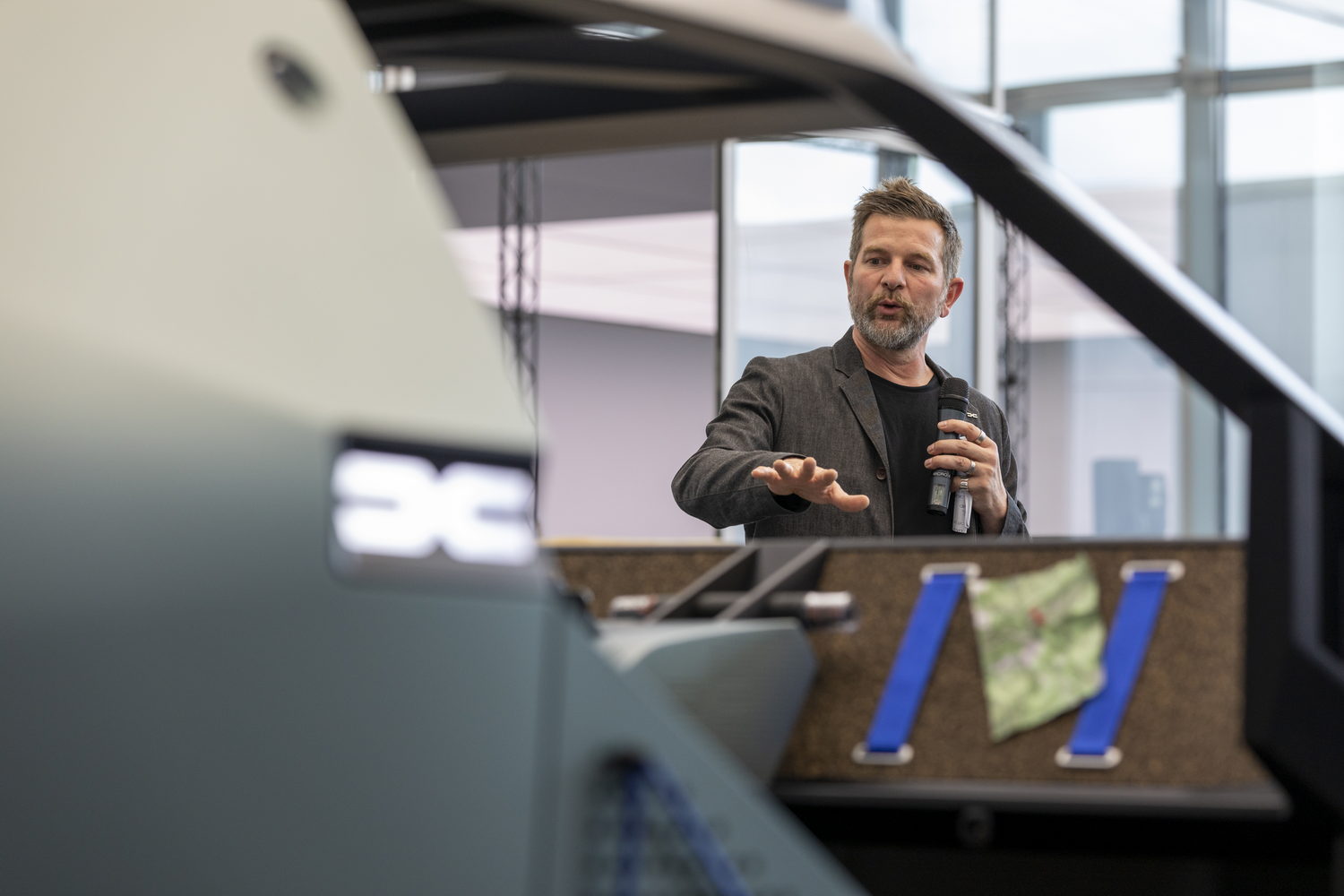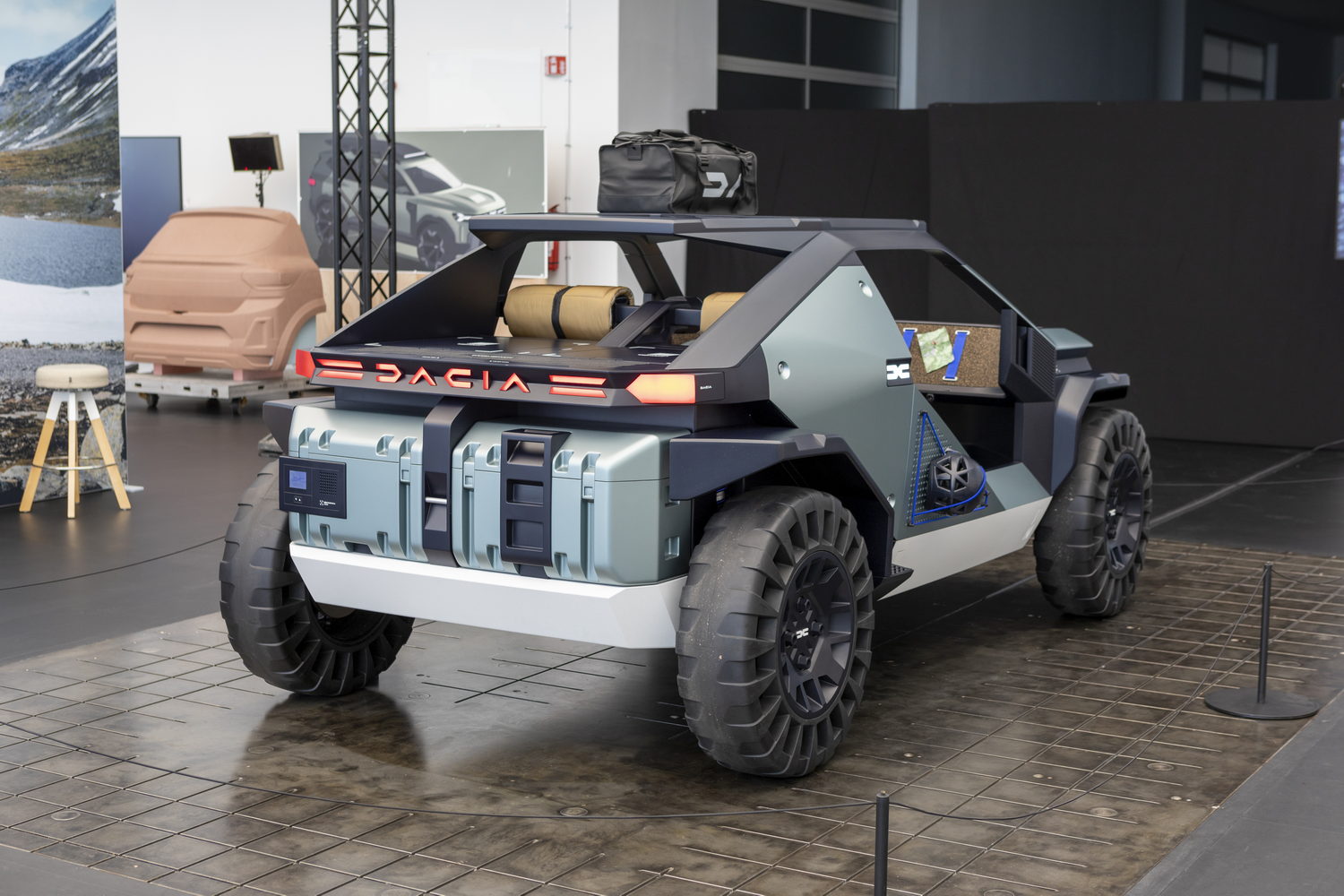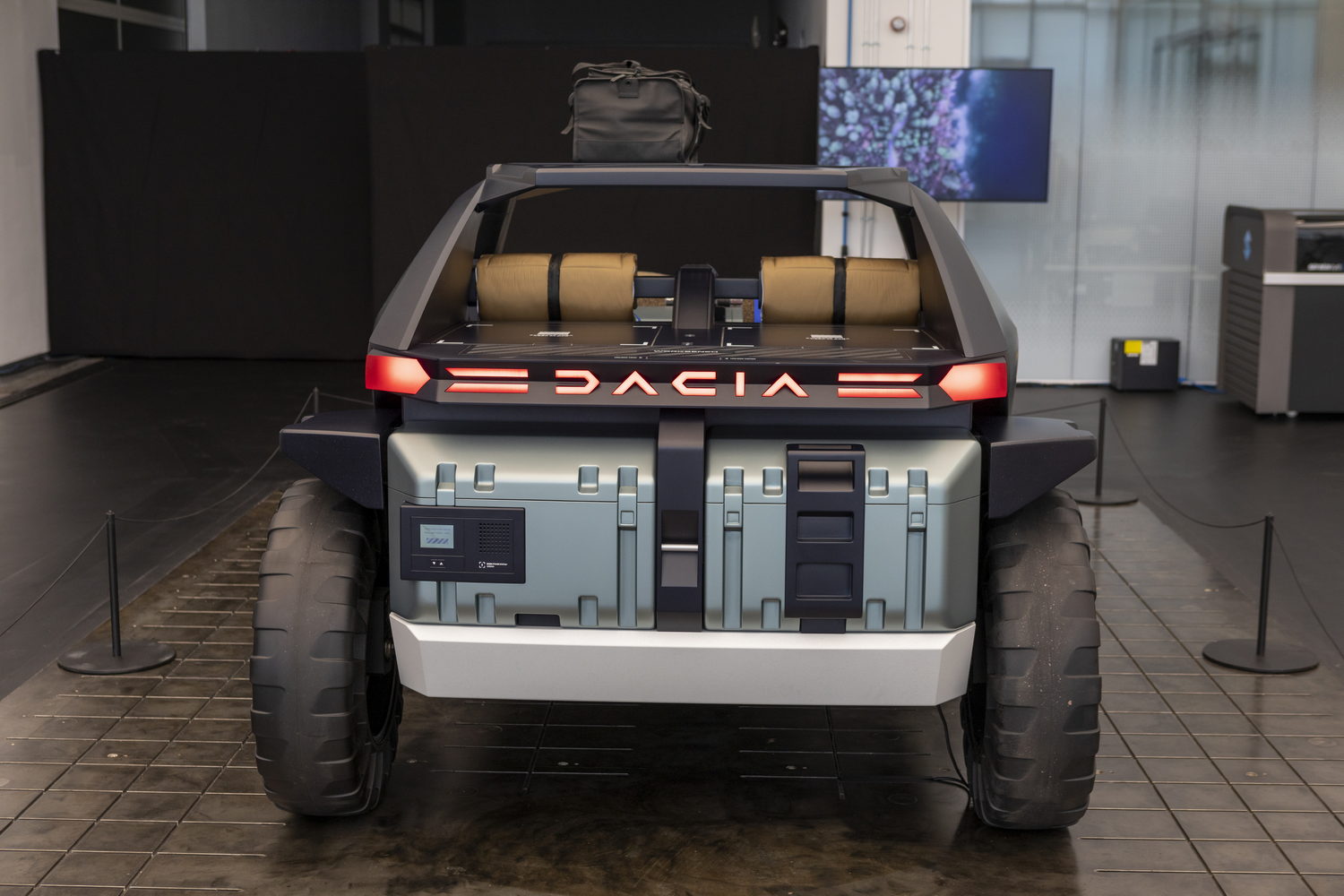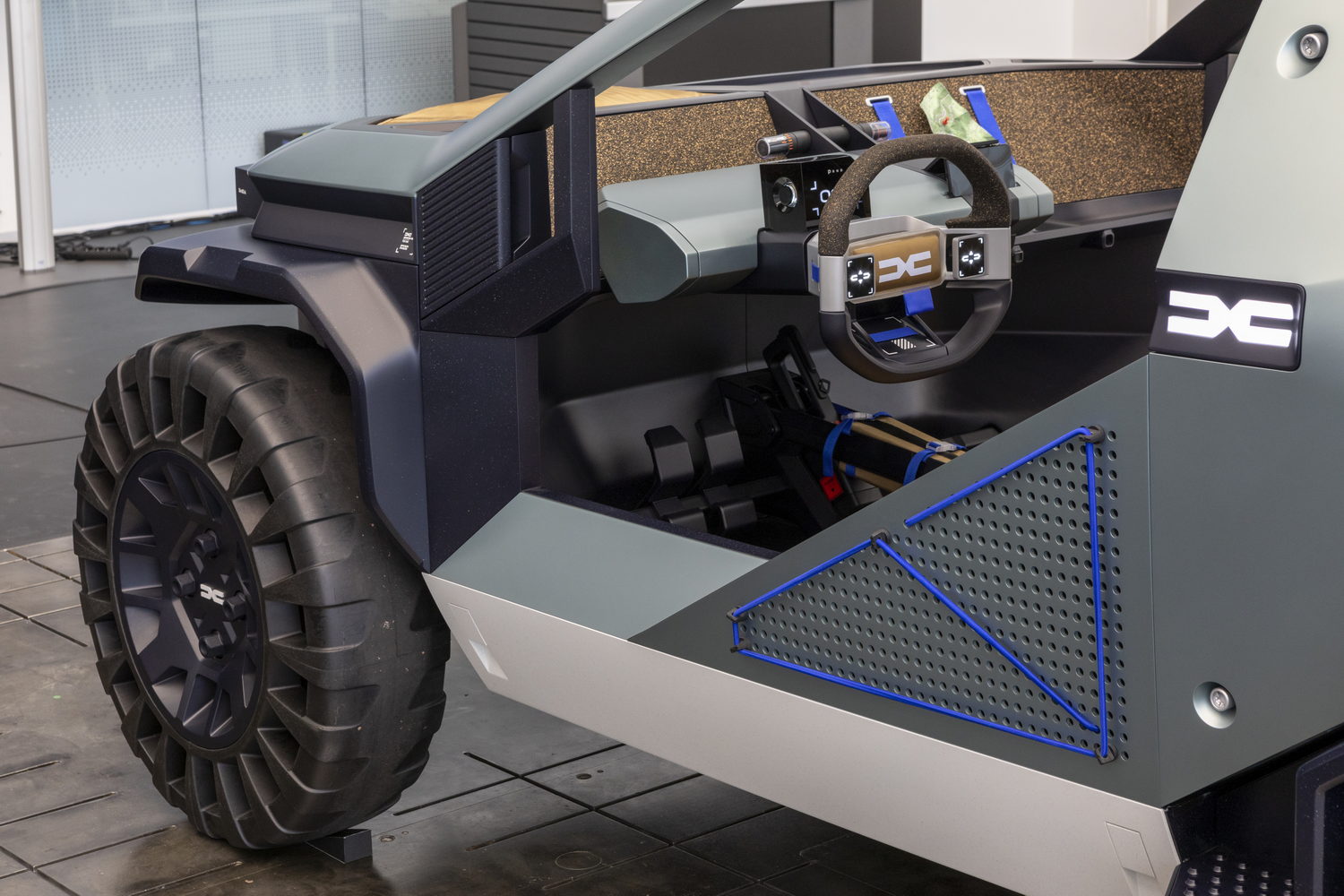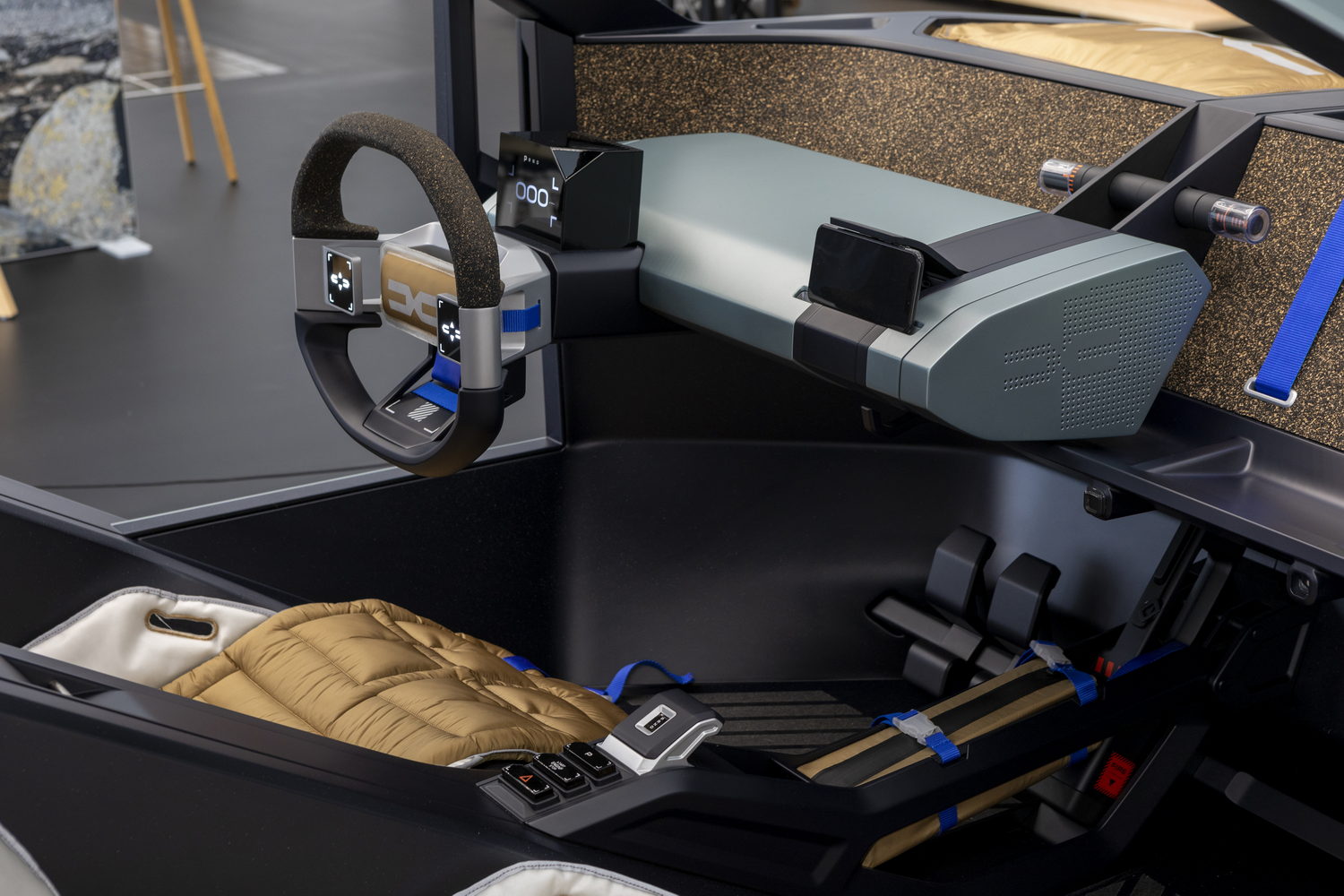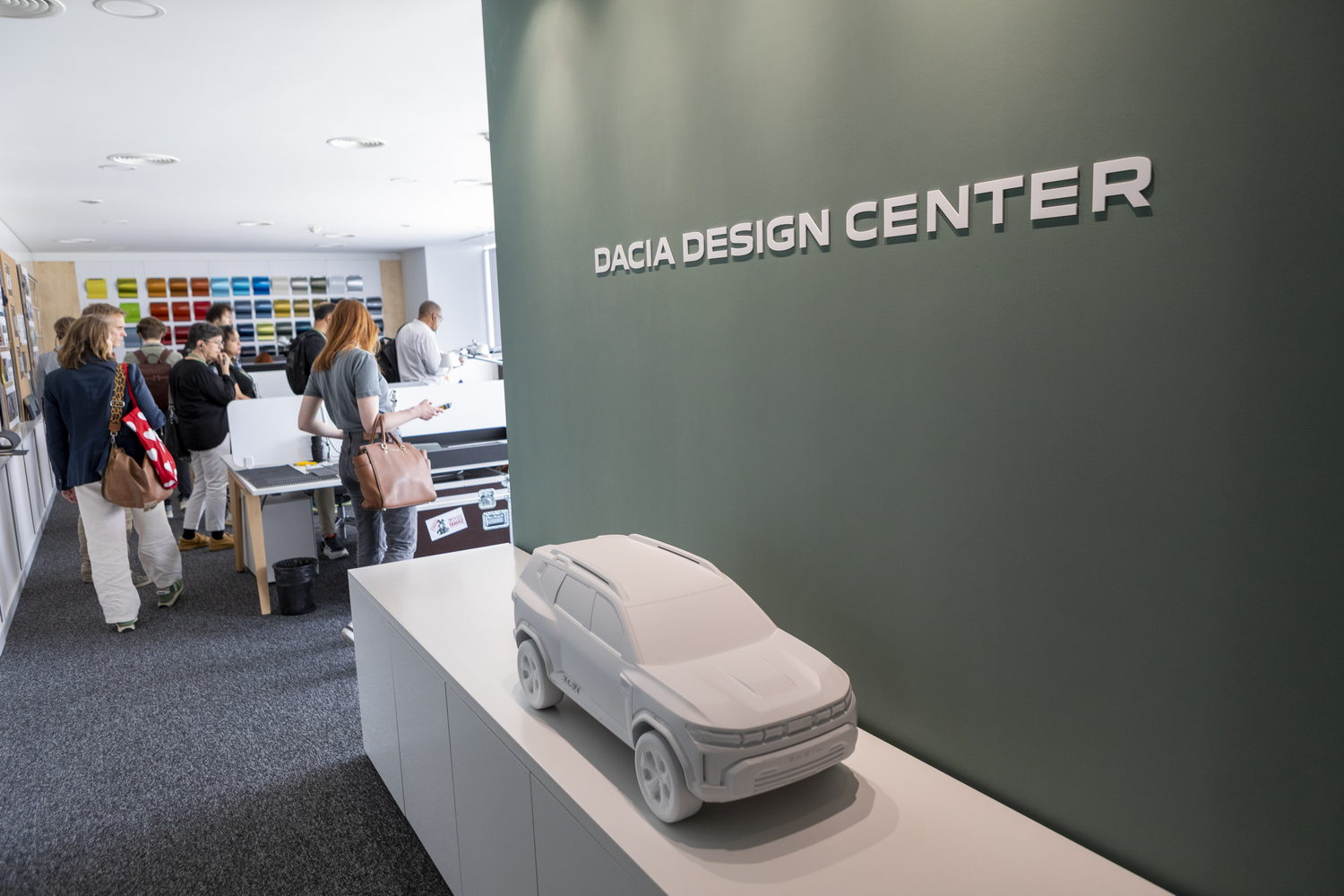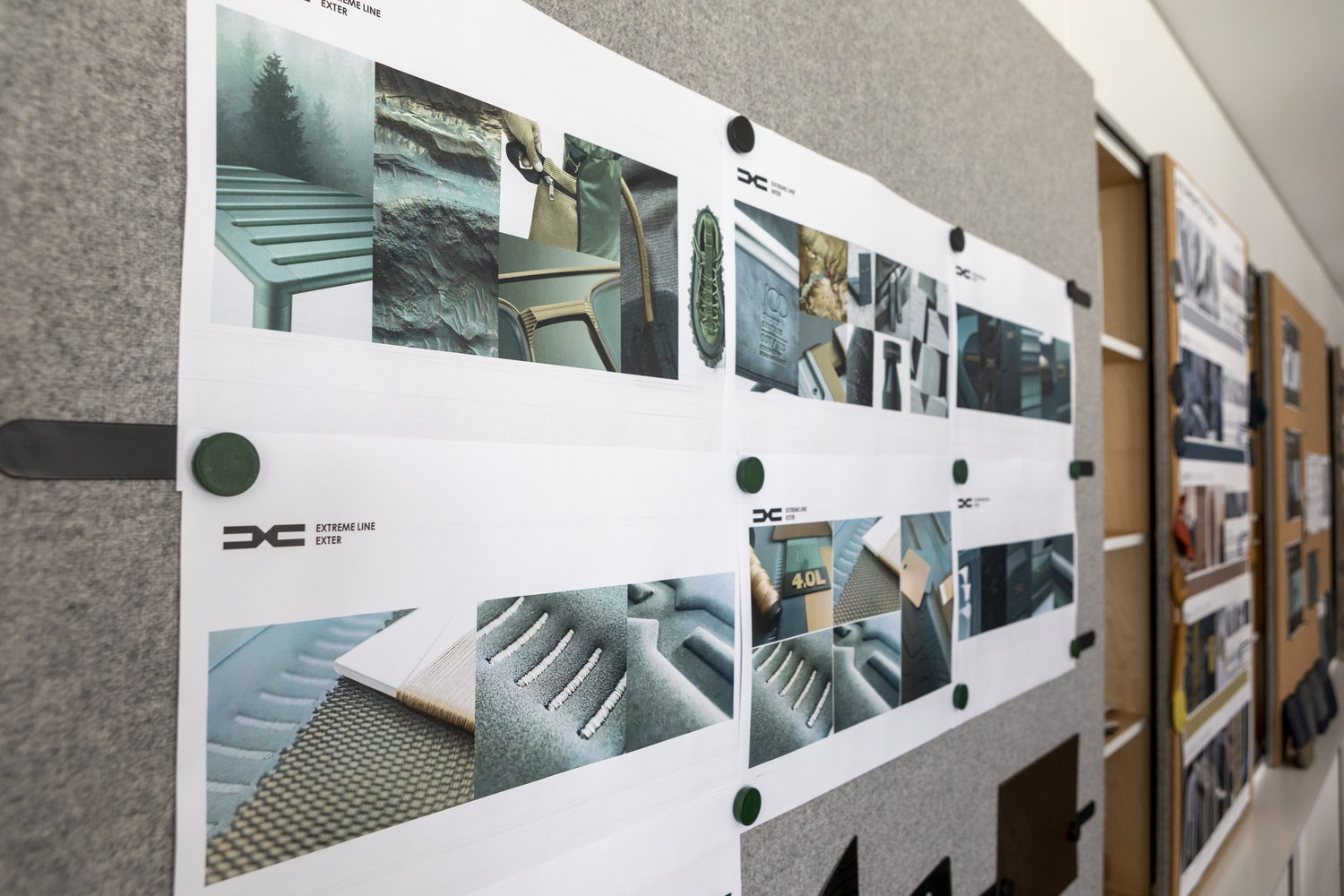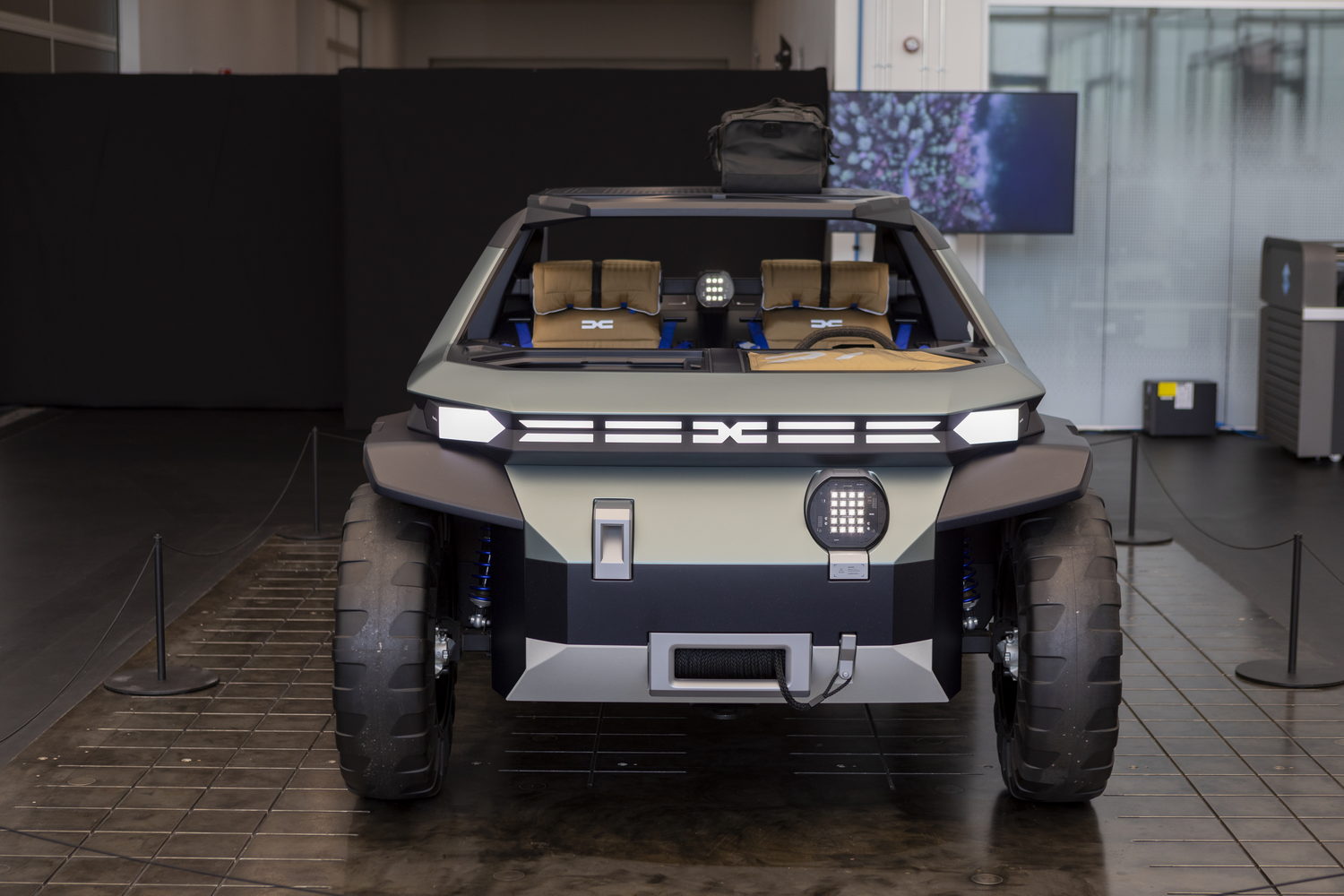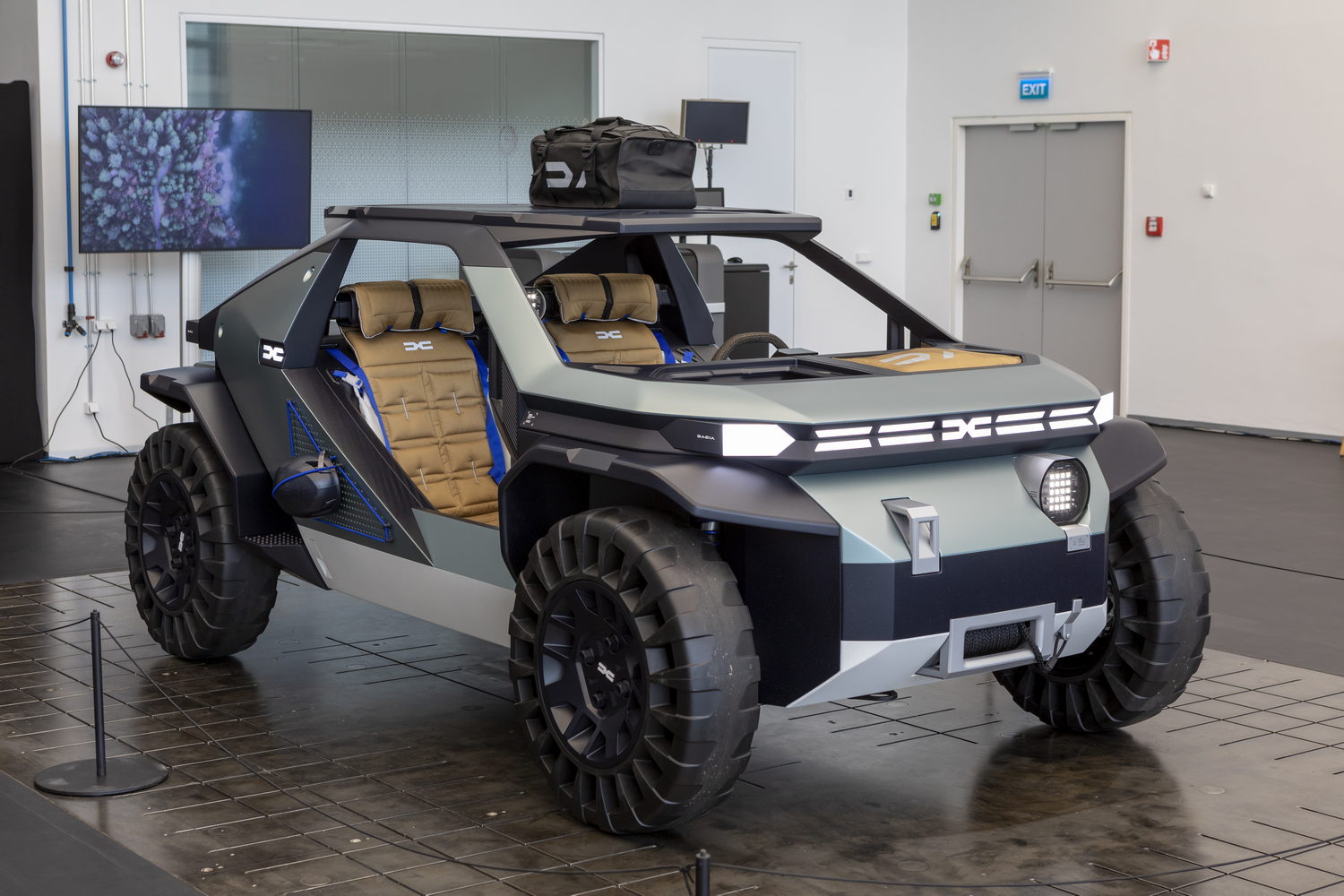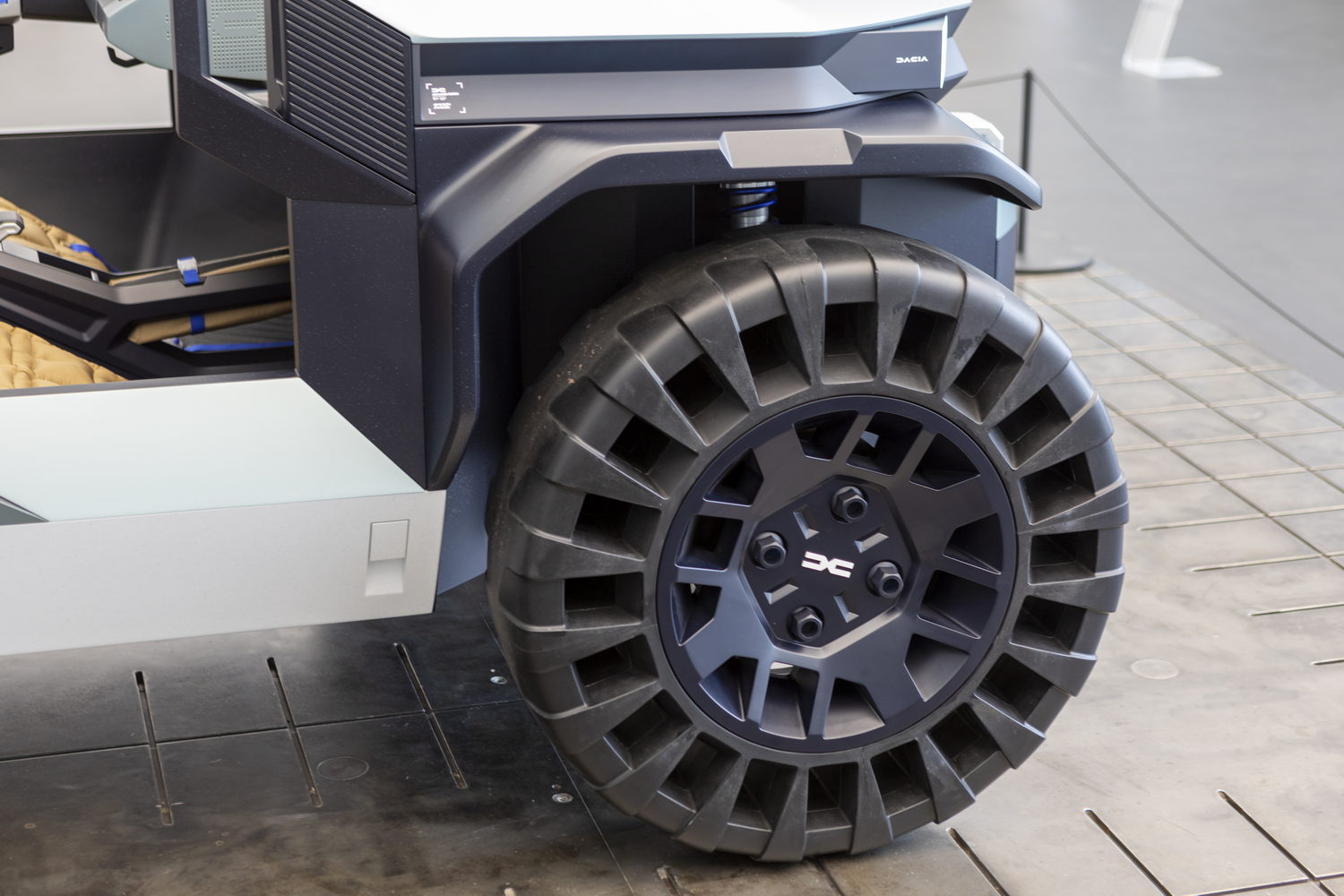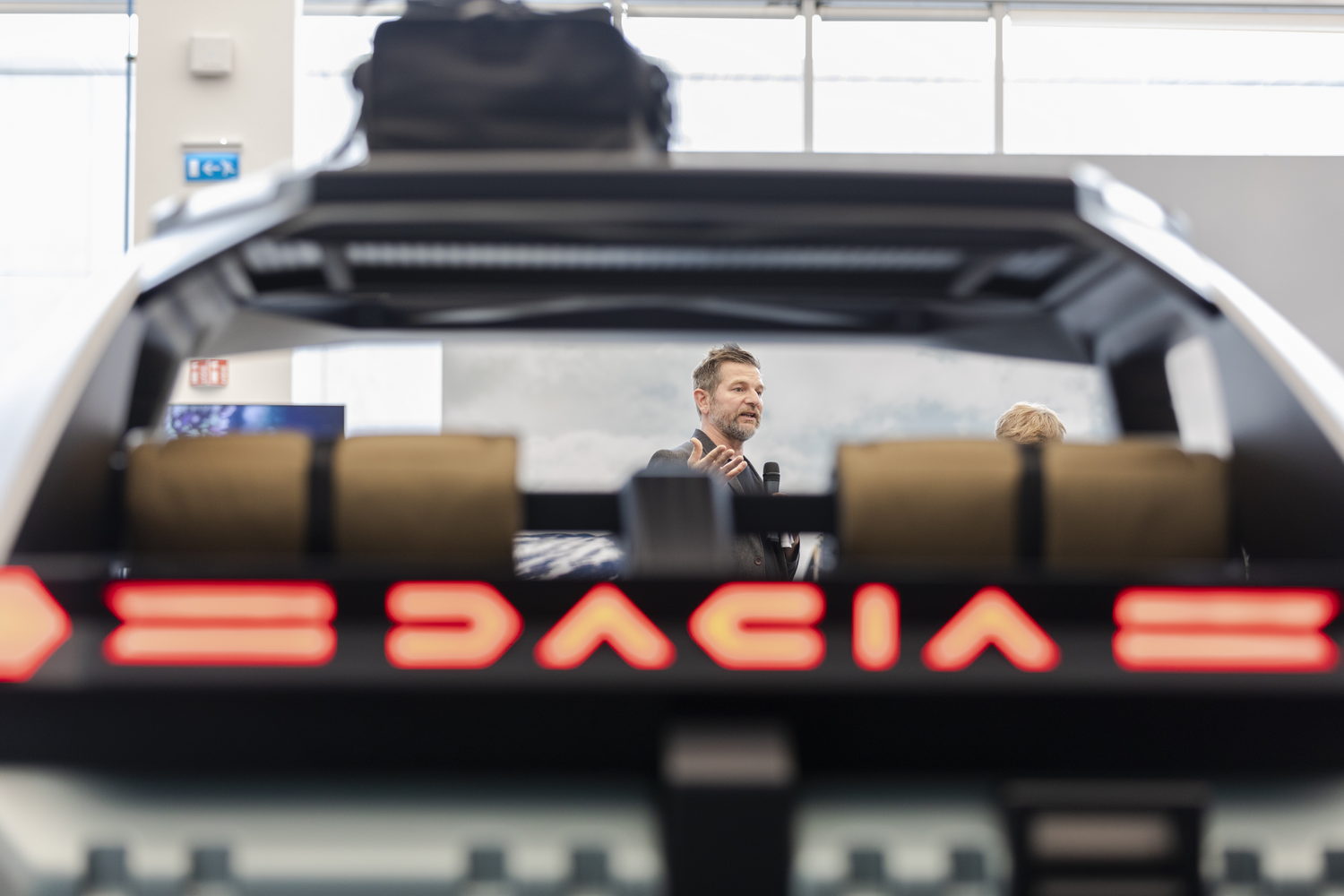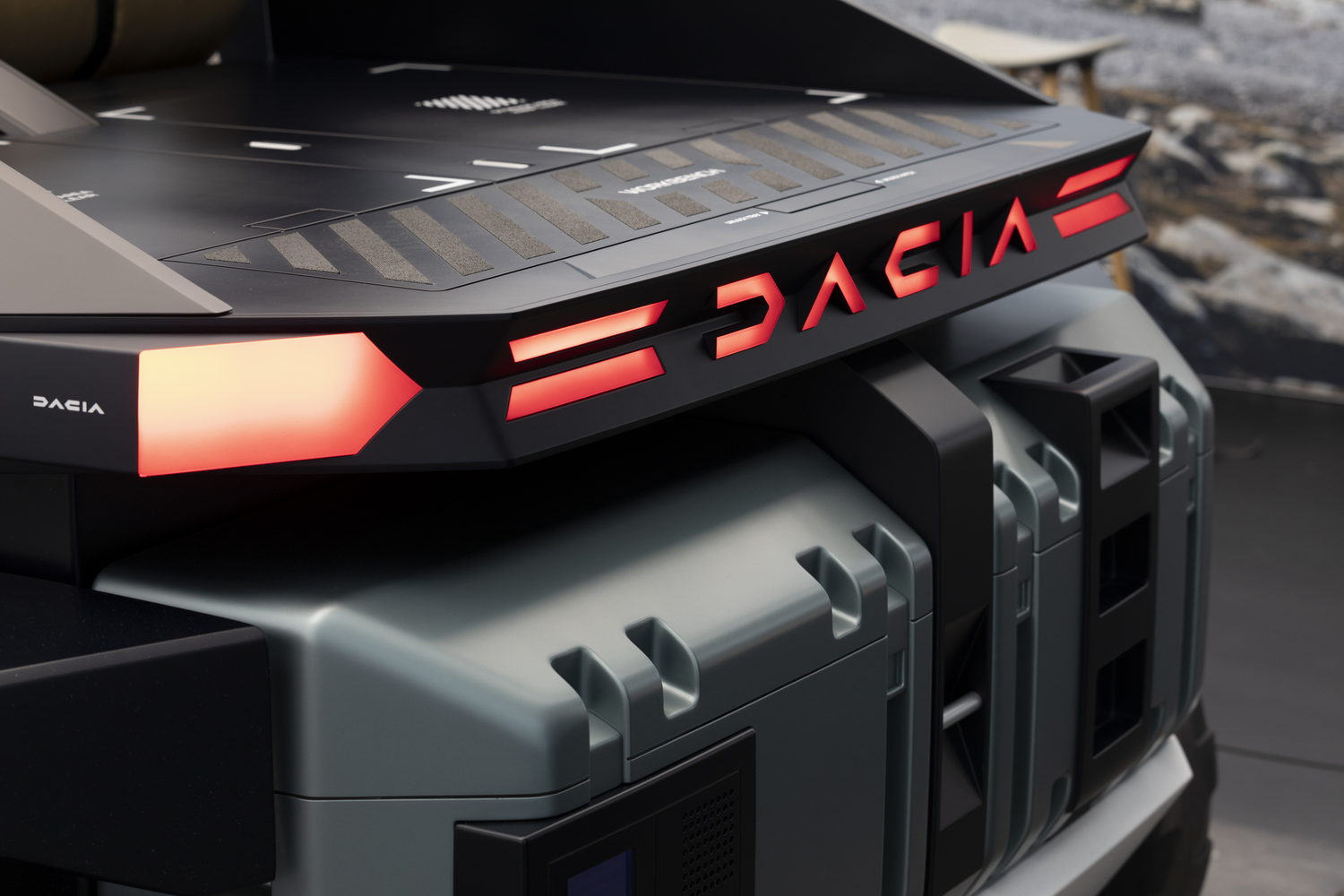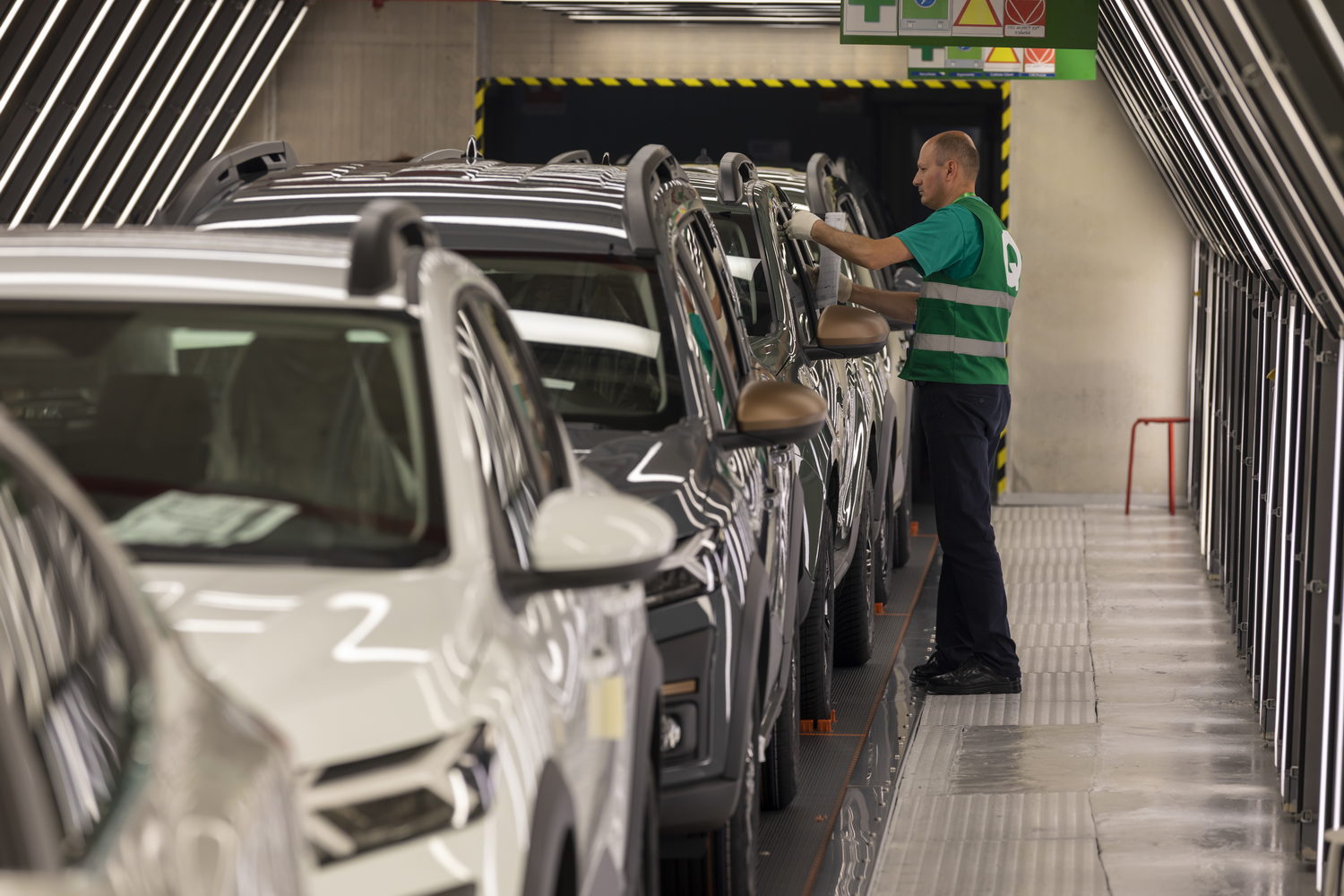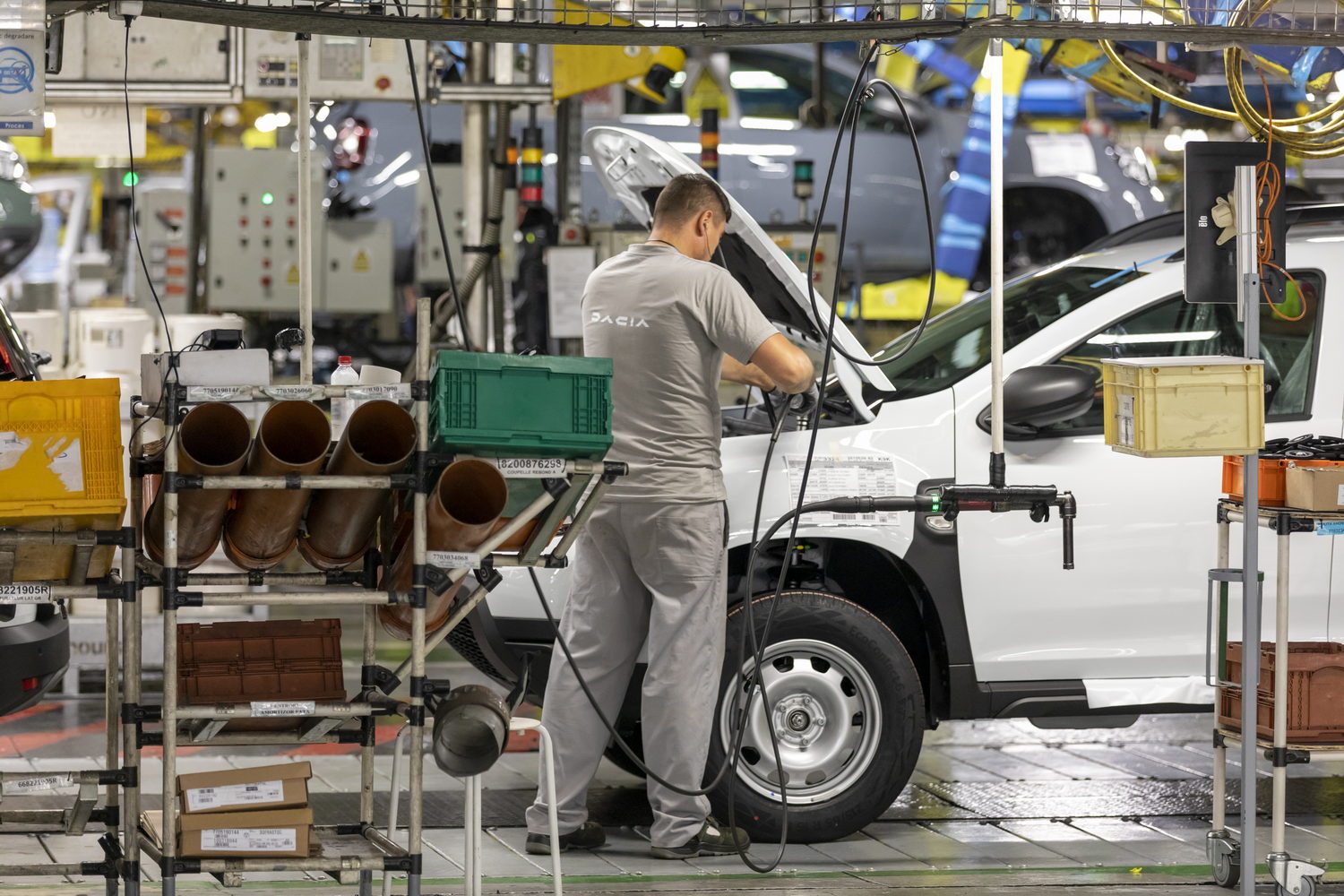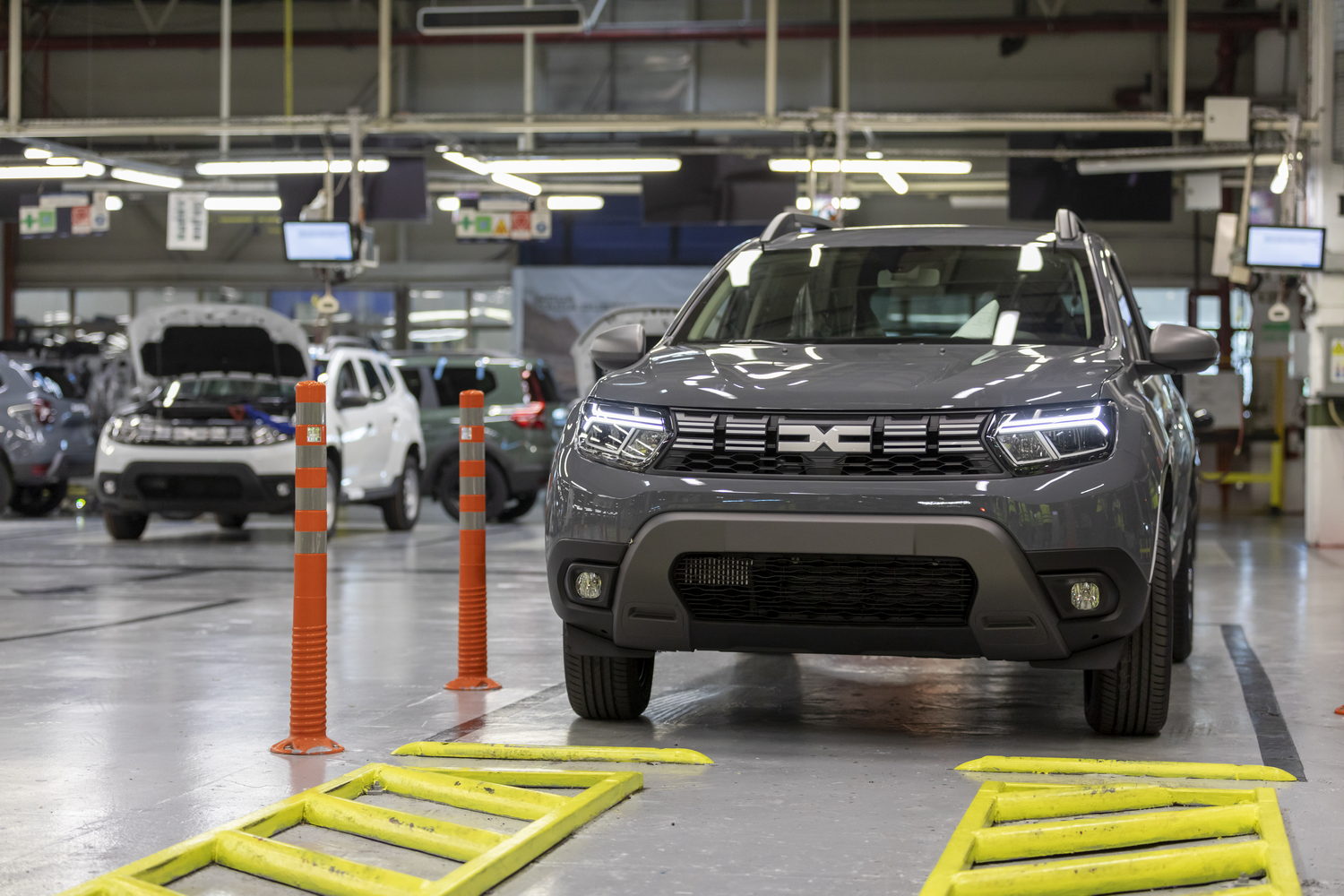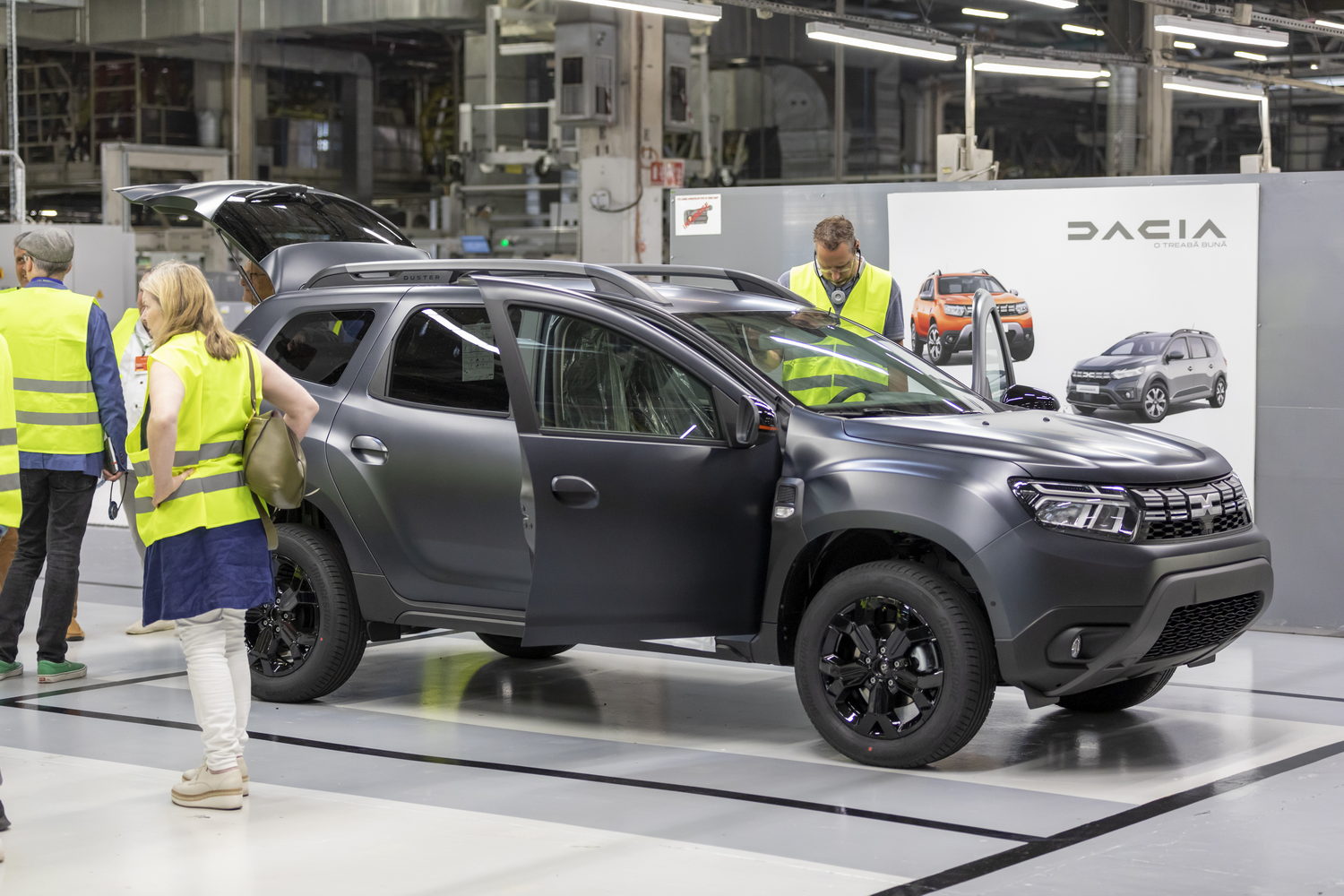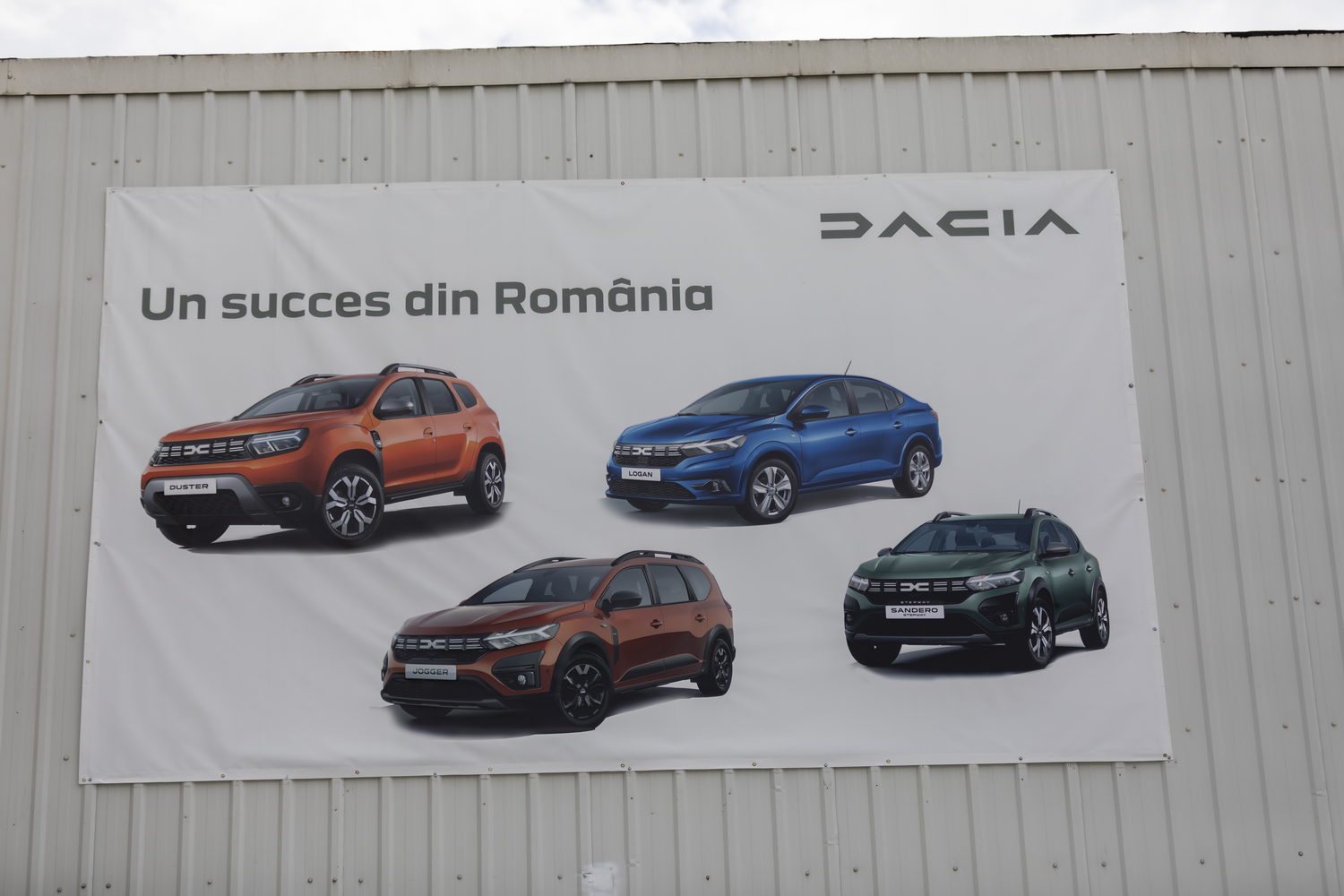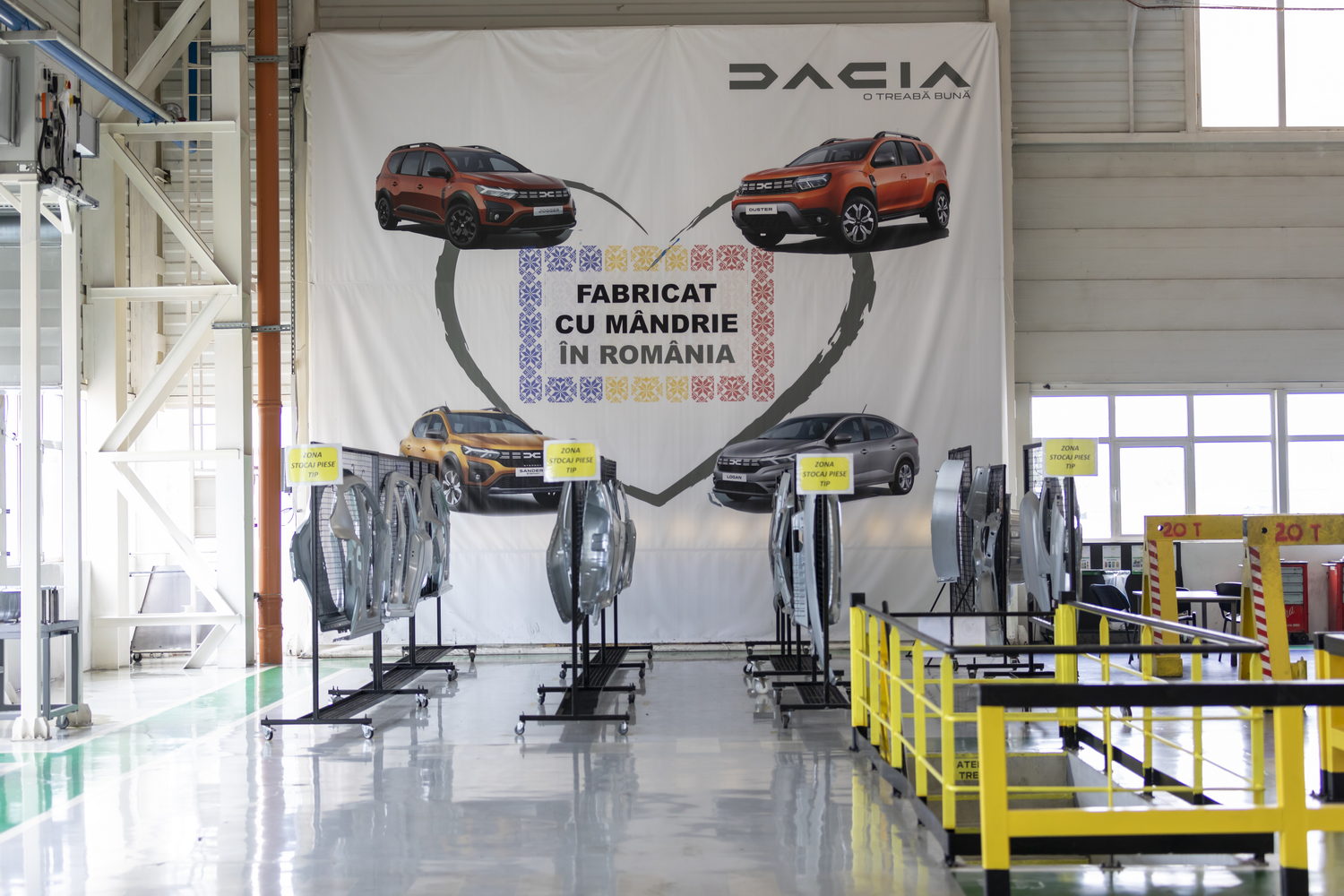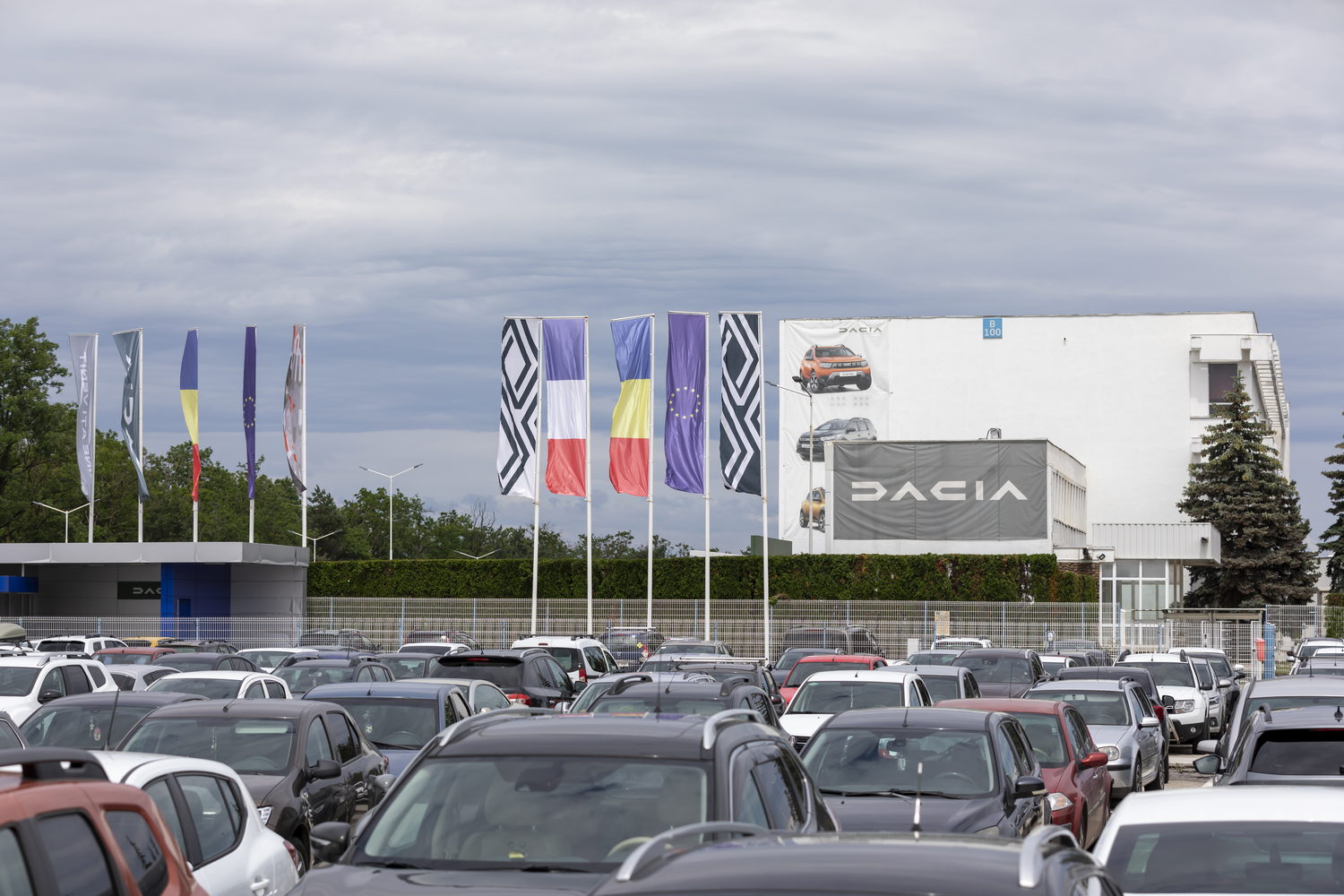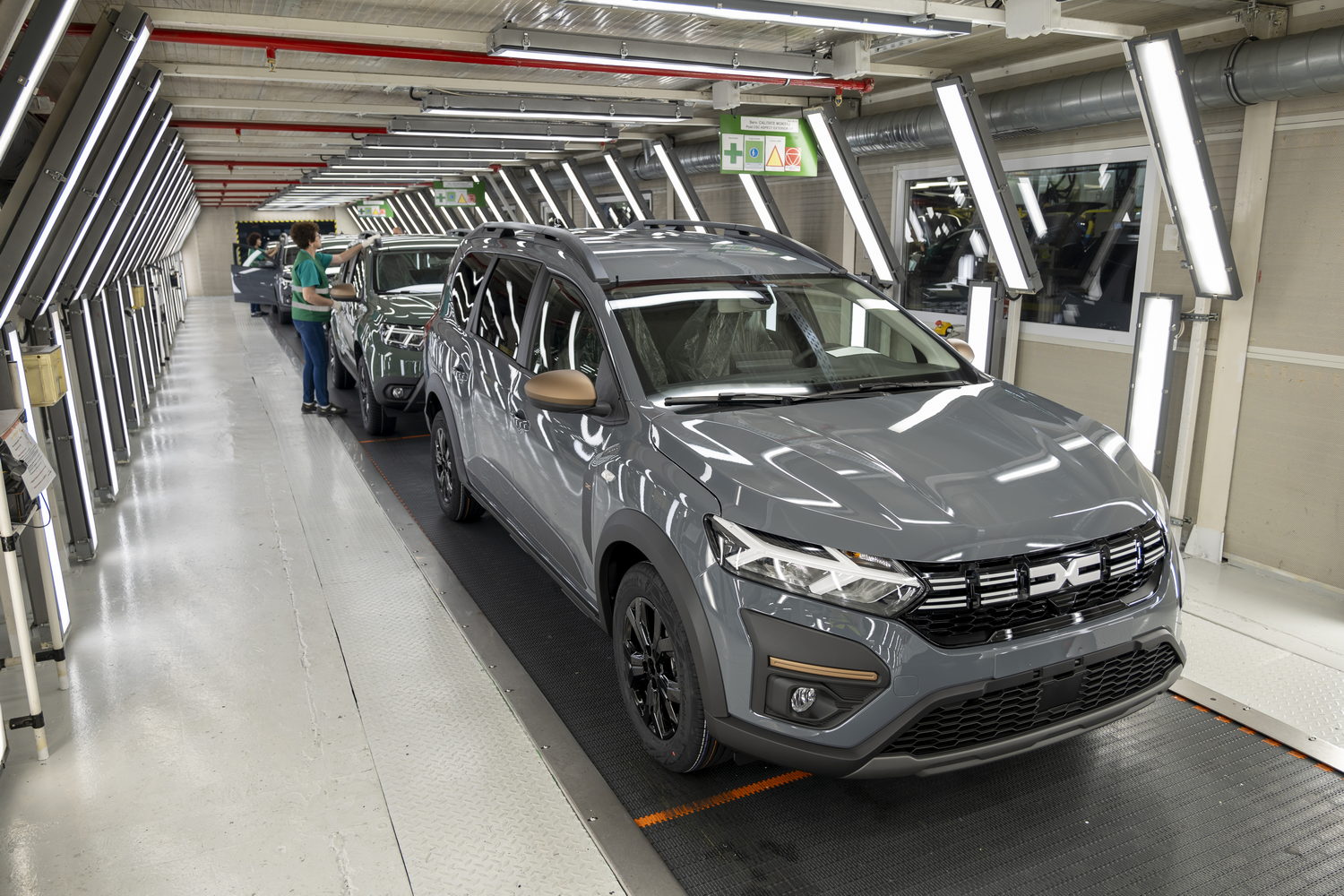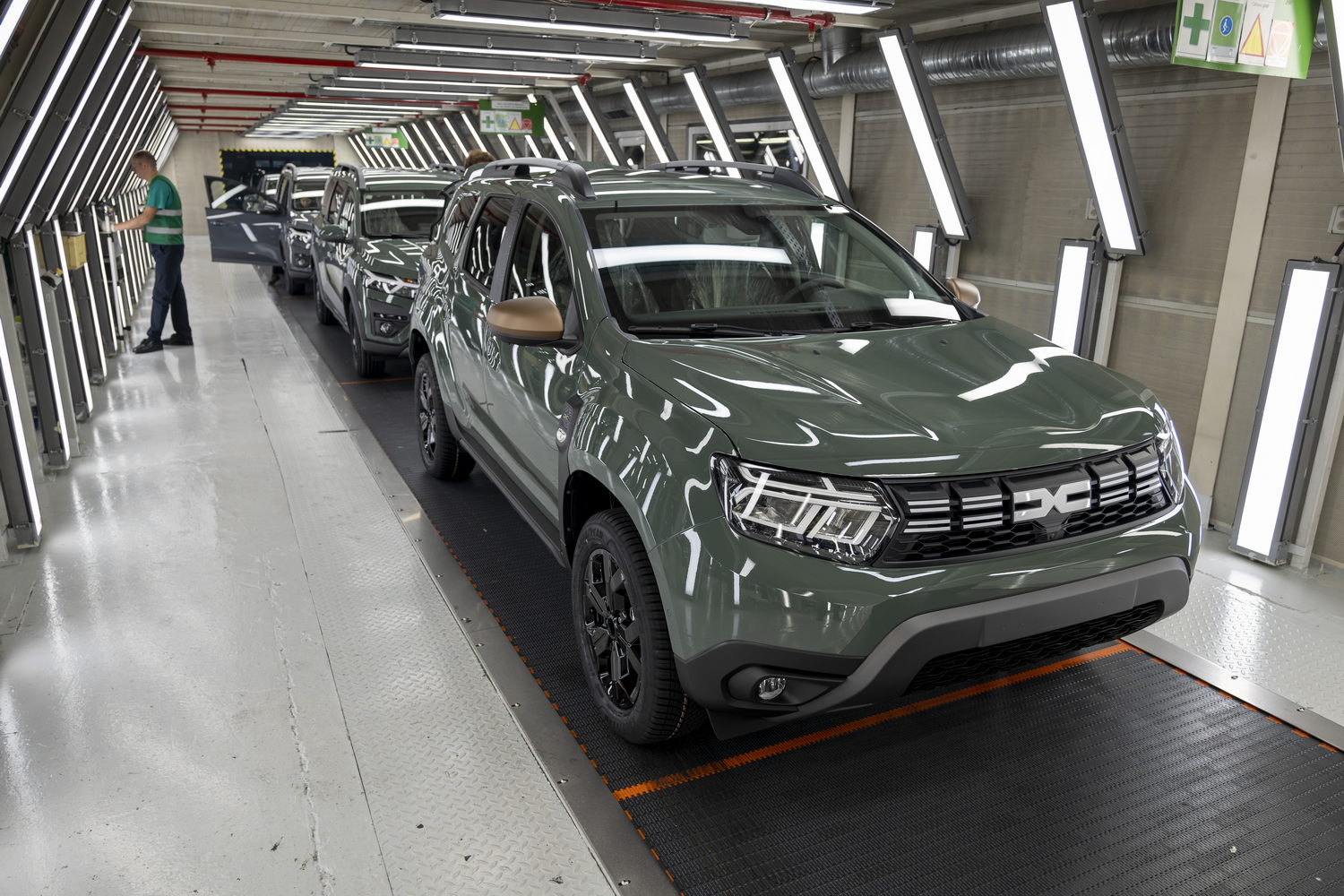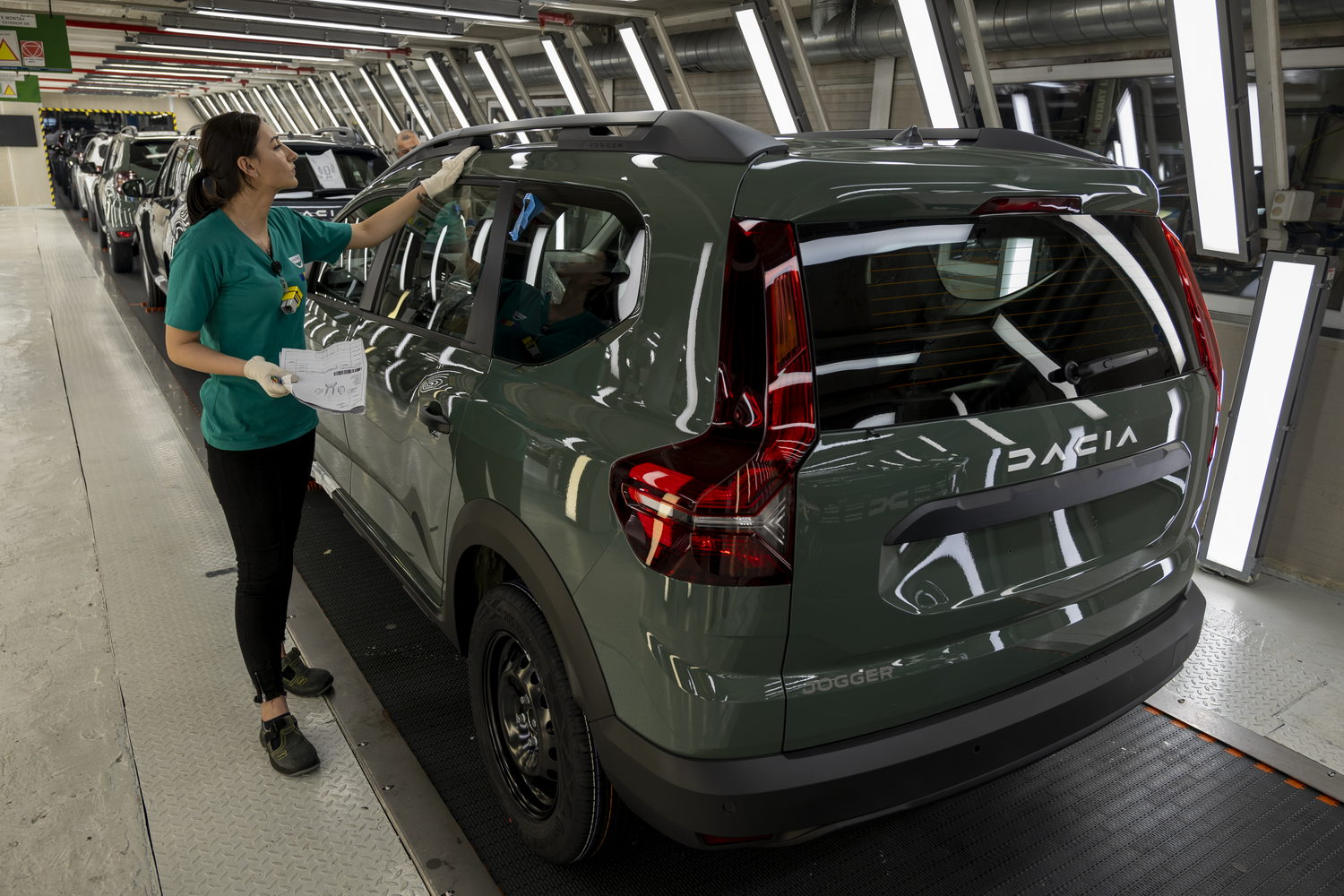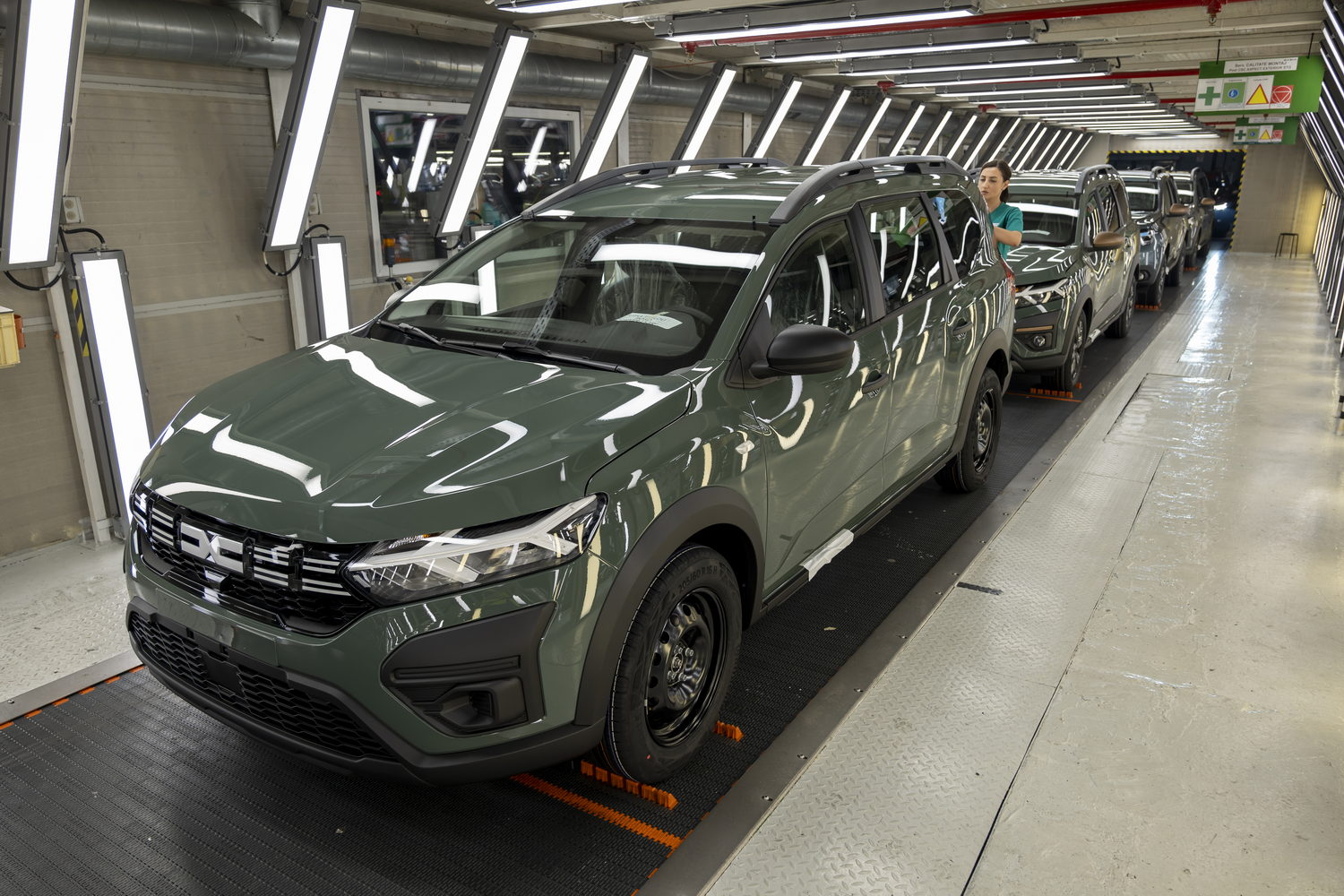Dacia began as an almost avowedly style-free brand. The 2004 Logan saloon, Dacia's first post-Communist car, was specifically designed to be as simple and as cheap to make as possible. So, it had flat steel panels, flat glass and almost an aversion to the kind of styling tics and tweaks that are such a part of most cars.
That has changed, and dramatically so. Look at the Bigster concept, which is a close preview of Dacia's upcoming Qashqai-sized crossover. It's chunky and contoured, with lots of interesting little design flourishes. Look at the current 'Extreme' range of Duster and Jogger, with their relief-map decorations on the doors, copper-coloured badging and deep metallic green paint. The original Logan would have been metaphorically clutching its pearls at such ostentation.
It's not ostentation for the sake of it, though. Sure, Dacia has had to add higher trim levels and more options, simply because many of its customers are trading down from brands that have become more expensive.
"We have buyers coming to us from 'upstairs' is what I say," Denis Le Vot, Dacia's CEO tells CompleteCar.ie. "But we are not taking a Renault product and removing parts so that it does not cost as much. That way doesn't work. What we do is we take our parts from the Renault shelves, and make sure we are adding the essentials for our customers, but nothing more than that. So we are always asking questions, can we save a Euro here or there, and it all adds up."
Le Vot admits that, in a car market apparently becoming ever more expensive, his cars are "getting a little more expensive. But they will still be the cheapest in town."
His cars will also have to become a little classier, as Dacia is about to move beyond its original small car patch and start building cars for Europe's vast, and profitable, C-segment. This encompasses everything from the Volkswagen Golf to the Nissan Qashqai, and the chunky Bigster will be the first Dacia C-segment product, expected to be launched in 2025.
C-segment customers are more demanding than Dacia's existing customer base, and the brand is already all-but exclusively customer clinic testing its new products in Germany, simply because German buyers are reckoned to be the most discerning.
So, how will Dacia be able to make the move to a more expensive, more demanding sector and still stay true to its affordable roots? A big part of the plan is how the cars are designed, and as design director David Durand tells CompleteCar.ie, it's not about flat panels anymore.
"That original Dacia Logan was a big bet, which [Renault Group chairman] Louis Schweitzer took at the time," said Durand. "We didn't know if it would work, and so we did this car at the minimum of minimum just in order to reach the price target. Now, today, we have huge volumes, and so this changes completely our work when you are negotiating with suppliers. We have much more power to reduce the cost and optimise the design because of our volumes."
Dacia is on the cusp of finding 600,000 car buyers a year for its line-up, and 80 per cent of those are retail customers - people buying with their own cash, not picking a company car. So while Durand can use the flexibility of the production process to create more stylistically interesting Dacias, he's not about to start driving their price up through design. Quite the opposite.
"So we start with an original design intention for, say, the headlamp units. And then we go to our suppliers, and they are saying, well maybe if we change a little here and a little there, we can make the unit for €2 less because maybe we need only one set of tooling. And so that's a way you can make cost savings through good design."
Mind you, even if he wanted to, Durand couldn't return to the simpler days of the original Logan. "That car had flat windows and headlamp units with glass lenses. If we even wanted to do a car like that again, it would actually cost more, because no-one is making flat glass panels anymore, or headlamps with glass."
While it sounds, from that, as if Durand can indulge in styling flights of fancy, and get Dacia's suppliers to bend to his will, it's actually not the case and he wouldn't have it any other way. "The way we do things stimulates a lot of creativity. I would say the worst thing for me would be to have a blank page and an unlimited budget. When you have constraints, that's when you become creative. For instance, on the current Duster, we had a gap between the front wheelarch and the door, because of the metal stamping process. Now, most car makers, they would fill that in with a panel, and make it body colour and try to hide it as much as possible. But this would be more expensive, and not just for the manufacturing, because now you need to make this part in all of your available body colours. So this is the kind of creative gymnastics we have to do, and we came up with this black plastic part, and actually once we tried it, we even made it bigger and we integrated the indicator light, and then we realised it was also practical because it was helping to protect the edge of the wheelarch. And now it's become kind of iconic for the Duster, and everyone recognises it, and it's a win-win situation."
Durand's design brief will now extend much further than simply making Dacias look good. He and his team are now working on integrating recycled materials into the construction of the cars, helping to reduce their individual carbon footprints. Starting with the next Duster, there'll be a new 'Starkle' plastic trim, which is 20 per cent recycled plastic. The ideas go further than that, though.
Durand walks us around Dacia's striking 'Manifesto' concept car - an entirely open two-seat electric off-road buggy. Inside, there's a sweep of recycled cork on the dashboard. Why? Because if you're in the middle of nowhere and can't get a GPS signal, you can pin a paper map to the dash. "We're also taking chrome finishing off Dacias," says Durand. "Chrome production is not very clean, so why not take that off and spend the money elsewhere? Or offer the customer a saving?"
Most intriguingly, there is the potential for cars that, instead of being traded in at the end of three years, are brought back to have their interiors and wear and tear parts refreshed. Dacia owners already keep their cars longer than the average - eight years, currently - so this makes huge sense and opens up the potential for massive carbon savings. After all, it's almost always greener to keep an old car going than to buy a new one.
The Manifesto has seats whose upholstery has been designed to be removeable. The idea for the Manifesto was that they could act as blankets or sleeping bags for when you're camping out, but Durand says that the idea could go further. "I don't know if it will be with the seats, but we are always thinking of this, and people do keep their Dacia longer. We have to keep in mind what might be damaged first, and we might make it so that it's easy to do at home yourself, like maybe replacing the boot floor. So it's part of our thinking, of saving material and trying not to over-consume."

